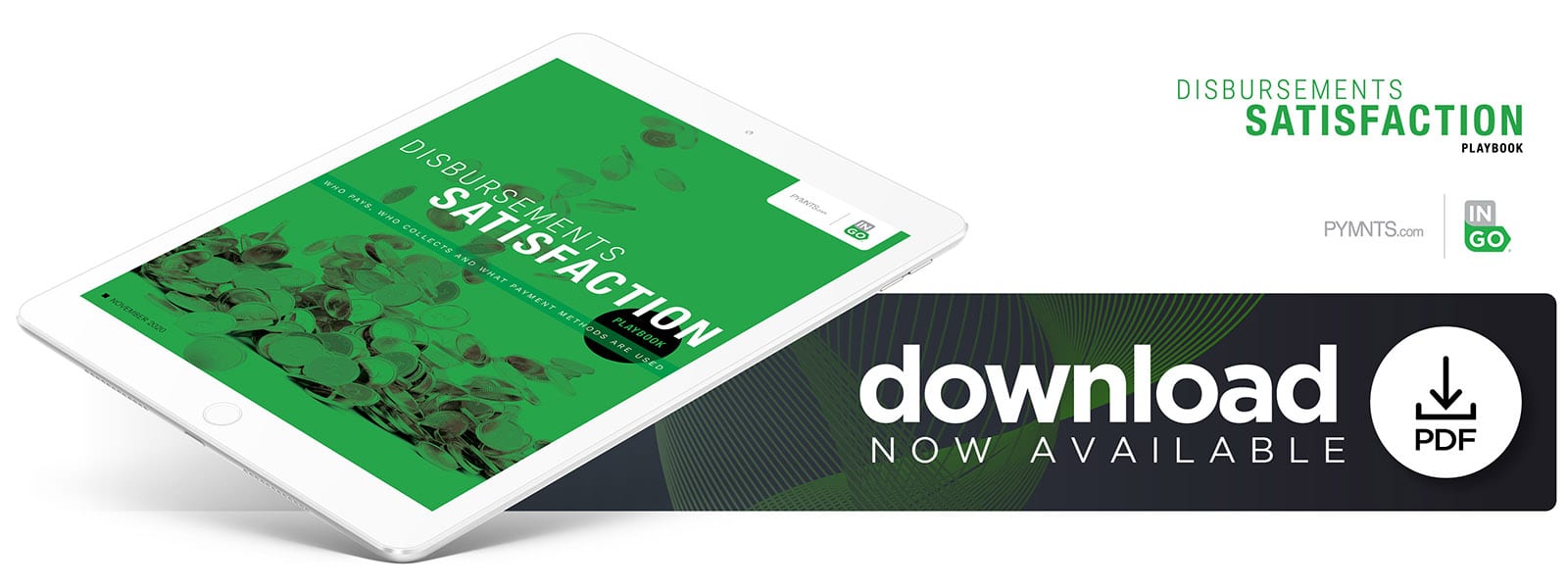NEW DATA: Closing The Instant-Disbursements Perception Gap
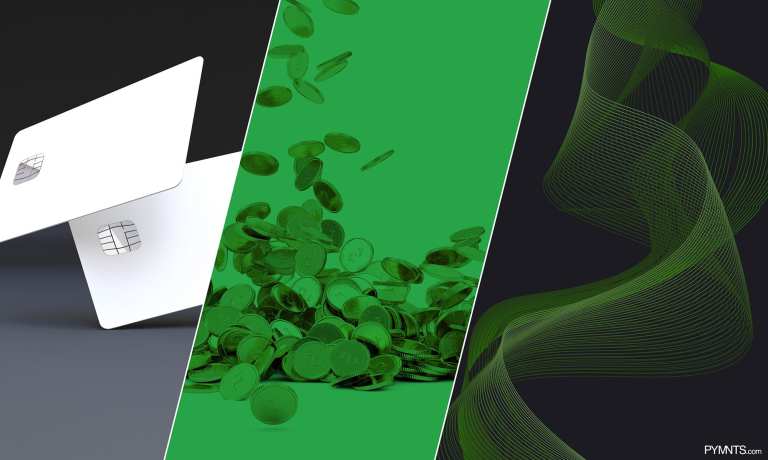
Payments speed is a crucial consideration for today’s consumers and microbusinesses when receiving disbursements, with PYMNTS’ research finding that more than half of the former and roughly 70 percent of the latter say they received at least one nongovernment payment within the past 12 months.
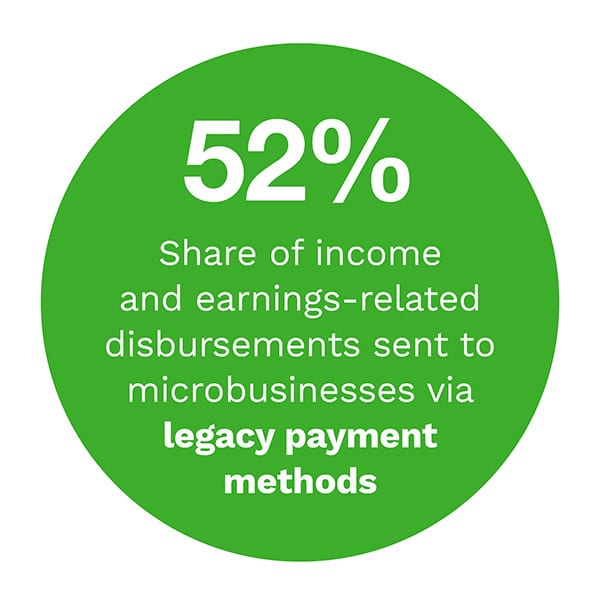 These disbursements are sent using a variety of methods, but approximately half of them leverage legacy payment options such as automated clearing house (ACH), checks and cash. What’s more, PYMNTS has identified a gap between how fast recipients say they are getting their disbursements and the methods payers claim to be using.
These disbursements are sent using a variety of methods, but approximately half of them leverage legacy payment options such as automated clearing house (ACH), checks and cash. What’s more, PYMNTS has identified a gap between how fast recipients say they are getting their disbursements and the methods payers claim to be using.
Our findings show that 58.4 percent of consumers and 70.8 percent of microbusinesses report most of their nongovernment disbursements coming from methods that are not instant. Payers, on the other hand, report that they make only 45.3 percent of their disbursements with noninstant methods — with the remainder being sent to recipients via faster options.
This disparity highlights several surprising revelations. Some recipients are unlikely to perceive the difference between the numerous disbursement methods used to send them payments, for example. Many are also unlikely to monitor their accounts constantly and thus are unsure exactly how quickly certain payments settle.
So how can businesses engage their disbursement recipients and raise awareness that instant options are available to give them the speed the crave?
In Disbursements Satisfaction Playbook: Who Pays, Who Collects And What Payment Methods Are Used, a PYMNTS and Ingo Money collaboration, we surveyed more than 5,000 U.S. consumers and 500 microbusinesses that receive disbursements, as well as 600 companies of all sizes that 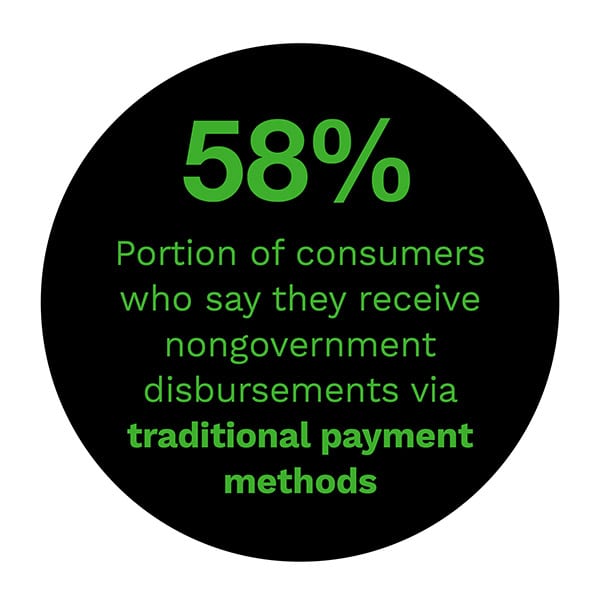 make disbursements. We gathered their views on payout options, payment methods used and the prevalence of instant payment methods.
make disbursements. We gathered their views on payout options, payment methods used and the prevalence of instant payment methods.
Our research reveals that almost half of all disbursements are sent via legacy payment methods, though some types of disbursements are even likelier to be sent using slower options. Forty-nine percent of income and earnings disbursements are still made using legacy methods, for example, while this share is 52 percent for microbusinesses. Insurance and lending-related disbursements follow a similar trend, with 59 percent of consumers and 50 percent of microbusinesses saying they received such payments through slower methods.
Generational differences also appear to factor into whether consumers have received instant disbursements within the past 12 months. Younger consumers — especially Generation Z members and millennials — are the likeliest demographics to report receiving instant nongovernment disbursements, at 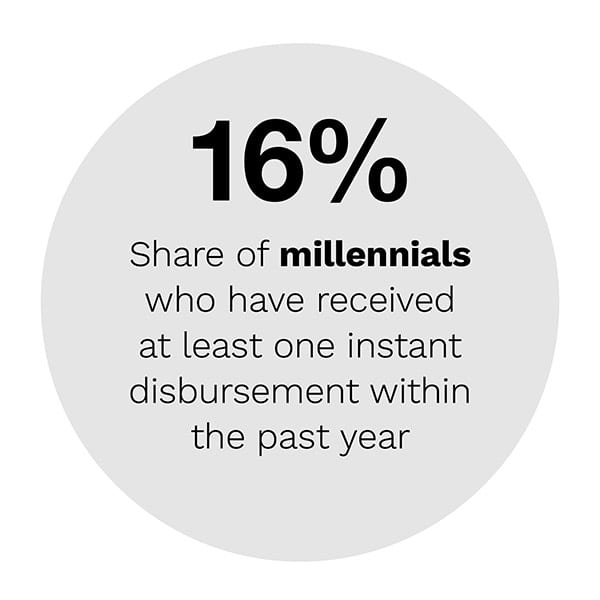 17 percent and 15.6 percent, respectively. This share is markedly lower for baby boomers and seniors, at 8 percent.
17 percent and 15.6 percent, respectively. This share is markedly lower for baby boomers and seniors, at 8 percent.
Younger consumers are also likelier to bank with financial institutions and do business with insurance providers that offer instant payments access, which could also explain their relatively more robust use of instant methods to receive disbursements.
These are just a few of the insights we detailed in our findings. For a more in-depth look, download the report.
